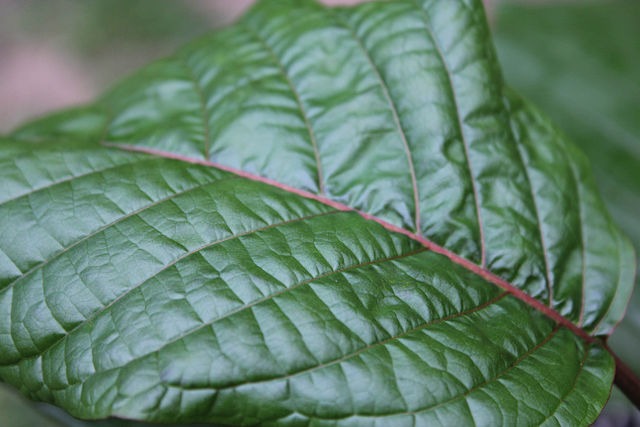Heroin and prescription painkiller addiction is rampant throughout the United States; in many parts of the country, it’s difficult to find someone who hasn’t been touched by the epidemic. The crisis has particularly affected low-income communities, but a recent wave of opioid-related deaths of celebrities, including Prince and Philip Seymour Hoffman, shattered any illusions that opioid addiction only hits people of a particular class or region.
Even politicians have taken notice. Throughout the presidential campaign, addressing opioid abuse has been a rare issue with bipartisan support. During the New Hampshire primary, Bernie Sanders urged voters to “understand that addiction is a disease, not a criminal activity”; Hillary Clinton emphasized the same point and released a plan to combat opioid addiction via community health initiatives. On the Republican side, Carly Fiorina frequently recounted her harrowing personal experience of losing a child to addiction. Meanwhile, Donald Trump suggested that building a wall along the border with Mexico could hinder the opioid supply.
Now kratom, an obscure plant native to Southeast Asia, has entered the debate. Kratom, which comes from the leaves of the Mitragyna speciosa tree, has been used for hundreds of years in Southeast Asia andas a mild stimulant and occasional treatment for opioid addiction. Despite its common use throughout the world, the substance only recently became popular within the United States after information about it spread online.
Kratom is sold as a supplement in this country and is not subject to regulation by the Food and Drug Administration. As a result, how it’s marketed varies widely. While kratom is usually ingested as a tea, the substance does not come with directions for use. Headshops and online vendors have increasingly marketed kratom as a “legal high.”
But many users dispute the “legal high” characterization, arguing that kratom is a mildly uplifting tea with some therapeutic benefits. Anecdotal reports from users suggest that kratom, which is said to bind to opioid receptors but without the risk of respiratory depression caused by high doses of opiates, can be used to treat chronic pain, manage opioid withdrawal, and even overcome opioid addiction. As such, users argue that kratom could potentially act as a safe replacement for traditional opioids.
However, the Drug Enforcement Agency disagrees. On August 30, it announced it would add mitragynine and 7-hydroxymitragynine, the primary bioactive alkaloids in the kratom plant, to its list of Schedule I substances, placing it among the ranks of heroin and LSD. The decision, which would kick in on September 30, would essentially ban kratom in the United States. The DEA defines Schedule I drugs as substances that “have a high potential for abuse” and “no currently accepted medical use.” Possessing the substance would become a felony, and it would become extremely difficult to obtain kratom for research.
The DEA argues that the emergency scheduling, which lasts for two years with a possible one-year extension, is necessary because kratom is an “imminent hazard to public safety.”
Addiction is a disease, not a moral choice, and prohibition will not eliminate people’s desire to obtain opioids.
Yet recent research may provide evidence to the contrary, as well as explain the positive anecdotal reports from kratom users. In a 2016 study published in the Journal of Medicinal Chemistry researchers isolated mitragynine, the main alkaloid constituent of kratom, and studied its effects on mice; they also studied 7-hydroxymitragynine and mitragynine pseudoindoxyl, the two oxidation products of mitragynine.
They found that while 7-hydroxymitragynine is a powerful painkiller, mitragynine pseudoindoxyl reduced pain without producing reward-seeking behavior in mice. Furthermore, it took mice six times longer to build tolerance to mitragynine pseudoindoxyl than it did for morphine; after tolerance was built, only mild withdrawal symptoms were observed.
One of the lead authors of the study, András Váradi, argues that their work “suggests that mitragynine derivatives may potentially have therapeutic uses in the future.” Váradi, who notes that he is not an advocate for kratom use, cautions that “as of now, too little is known of the efficacy and, more importantly, the safety of kratom and its alkaloids in humans to draw conclusions. That is one of the major reasons why further research on kratom and its alkaloids is necessary.”
Other studies also point toward potential therapeutic uses. Preliminary research from the University of Mississippi suggests that kratom “could provide a remarkable step-down-like treatment for people addicted to hardcore narcotics such as morphine, oxycodone or heroin.”
But making kratom a “controlled substance” could impede future research. Váradi notes that if kratom is restricted “it will make it much more difficult to obtain large enough amounts of the plant product . . . scientists will have to obtain a Schedule I license and go through multiple administrative steps to obtain kratom and its alkaloids for their research needs. The decision may also hinder future clinical studies that would look at the effects and safety of kratom in humans.”
If current research shows that kratom is relatively safe, then why did the DEA feel it necessary to claim the plant is an “imminent hazard to public safety” that requires rapid policy changes? After all, an emergency scheduling of kratom will be an expensive, time-intensive action that will obstruct research and affect hundreds of thousands of consumers within the United States.
In its announcement in August, the DEA cited a Centers for Disease Control and Prevention report that said U.S. Poison Control Centers received 660 calls related to kratom from 2010–2015. The agency also claims to be aware of 15 kratom-related deaths within the past two years. But this number of calls over a five-year period is rather low, especially given that there were 6,843 calls related to laundry detergent pods in the first seven months of 2016. Furthermore, the DEA only cites deaths where kratom was detected during an autopsy; there is no evidence to suggest that kratom caused any of these deaths.
A more convincing explanation may be that corporate interests are guiding the DEA’s hand. In recent years, numerous studies have explored whether new synthetic opioids that act similarly to kratom can be created. Some studies have even synthesized new opioids directly from the alkaloids found in kratom.
Pharmaceutical companies have shown great interest in the research. A lead researcher on one of the synthetic opioid studies was recently hired as the principal scientist at Janssen Pharmaceutical—a division of the health care titan Johnson & Johnson. Likewise, Trevena, a biopharmaceutical company, is in the process of developing a synthetic opioid that reduces pain without the dangerous side effects of existing prescription painkillers.
Because the opioid epidemic claims more than 28,000 American lives each year, an opioid that reduces pain without causing respiratory depression and severe addiction is in great demand. Because kratom is a naturally occurring plant, it cannot be patented and would not be particularly profitable for a pharmaceutical company. Similarly, these synthetic painkillers would not be profitable as long as kratom exists in the market as a non-patented generic alternative.
The revolving door between the DEA and private industry has been well-documented. Chuck Rosenberg, the current head of the DEA, served as a partner at the international law firm Hogan Lovells from 2008 to 2013. Rosenberg was appointed as Acting Administrator of the DEA by Attorney General Loretta Lynch in 2015. Lynch also served as a partner at Hogan Lovells from 2001 to 2010.
A report from Public Citizen, a D.C.-based consumer-rights group, shows that Hogan Lovells has frequently lobbied for the pharmaceutical industry—indeed, one of its past clients was Johnson & Johnson. And as the Hogan Lovells website states, one of the firm’s main goals is to help pharmaceutical companies manage “competitors with alternative brands or generics” by navigating the regulatory landscape.
While the relative lack of information about kratom necessitates more research and regulation, the DEA’s decision needs to be put into context. Forty-four Americans die from overdoses each day, and the CDC’s own statistics show that these deaths have nearly quadrupled since 1999. Heroin and other opioids bought on the black market have increasingly been laced with potent synthetic opioids like fentanyl and carfentanil, further increasing deadly overdoses.
A substance that can reduce cravings for opioids without causing respiratory depression could be a powerful harm-reduction tool. Addiction is a disease, not a moral choice, and prohibition will not eliminate people’s desire to obtain opioids. Kratom, if properly regulated, could reduce deadly overdoses and save lives, and its unique properties could make it a game-changer for managing pain and opioid addiction. The United States could follow the lead of Canada, which regulates kratom as a legal Natural Health Product (NHP).
By banning kratom, the DEA may be inadvertently accelerating the national opioid epidemic by encouraging recovering addicts to get their fix from heroin, prescription painkillers, and other deadly opioids. Even if synthetic alternatives are introduced to the market, prescription drug costs could price patients out of a life-saving treatment. Whatever the DEA’s motivations, if its decision to make kratom a Schedule I substance is not reconsidered, we will soon find out the results of America’s newest experiment in prohibition.
Michael Payne is an activist and writer living in Virginia.






